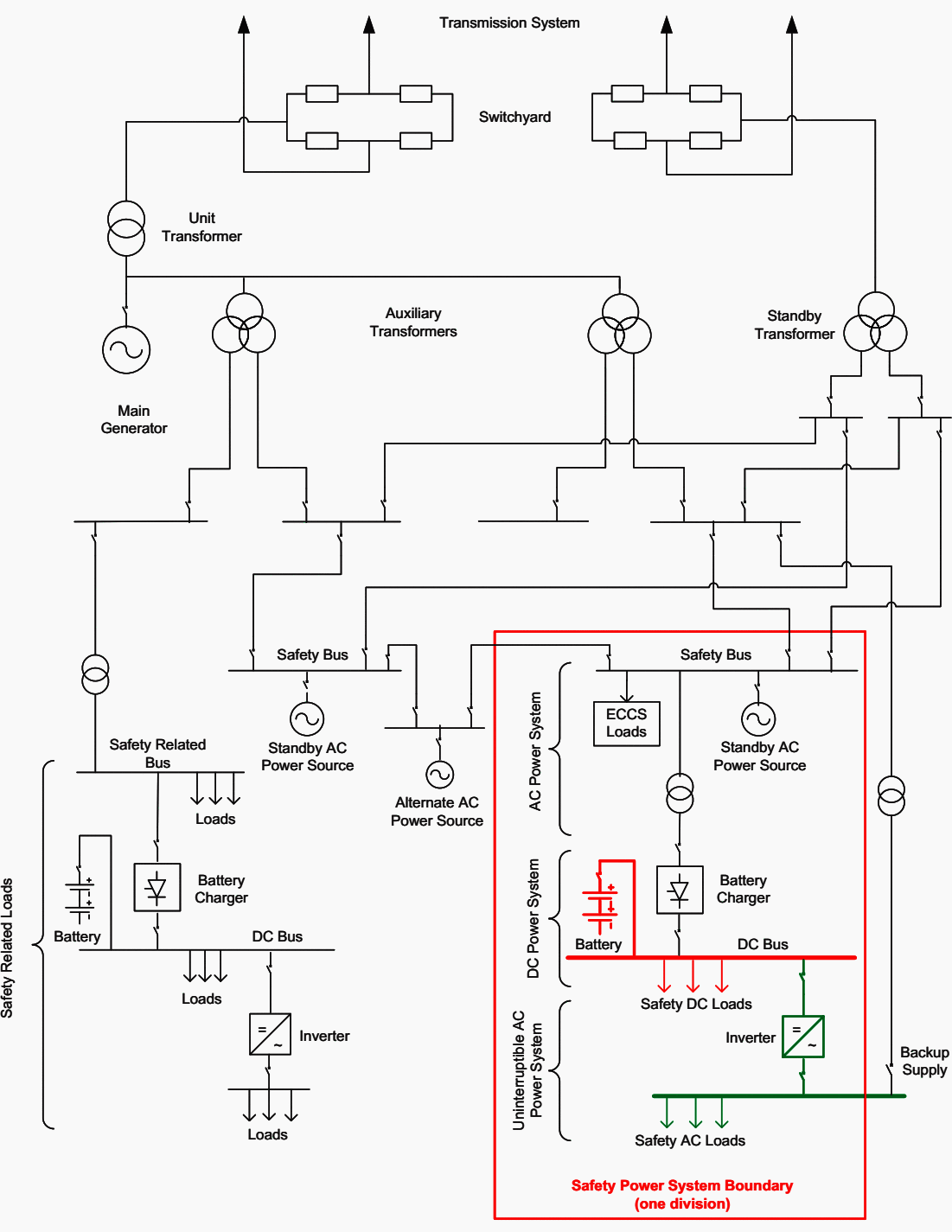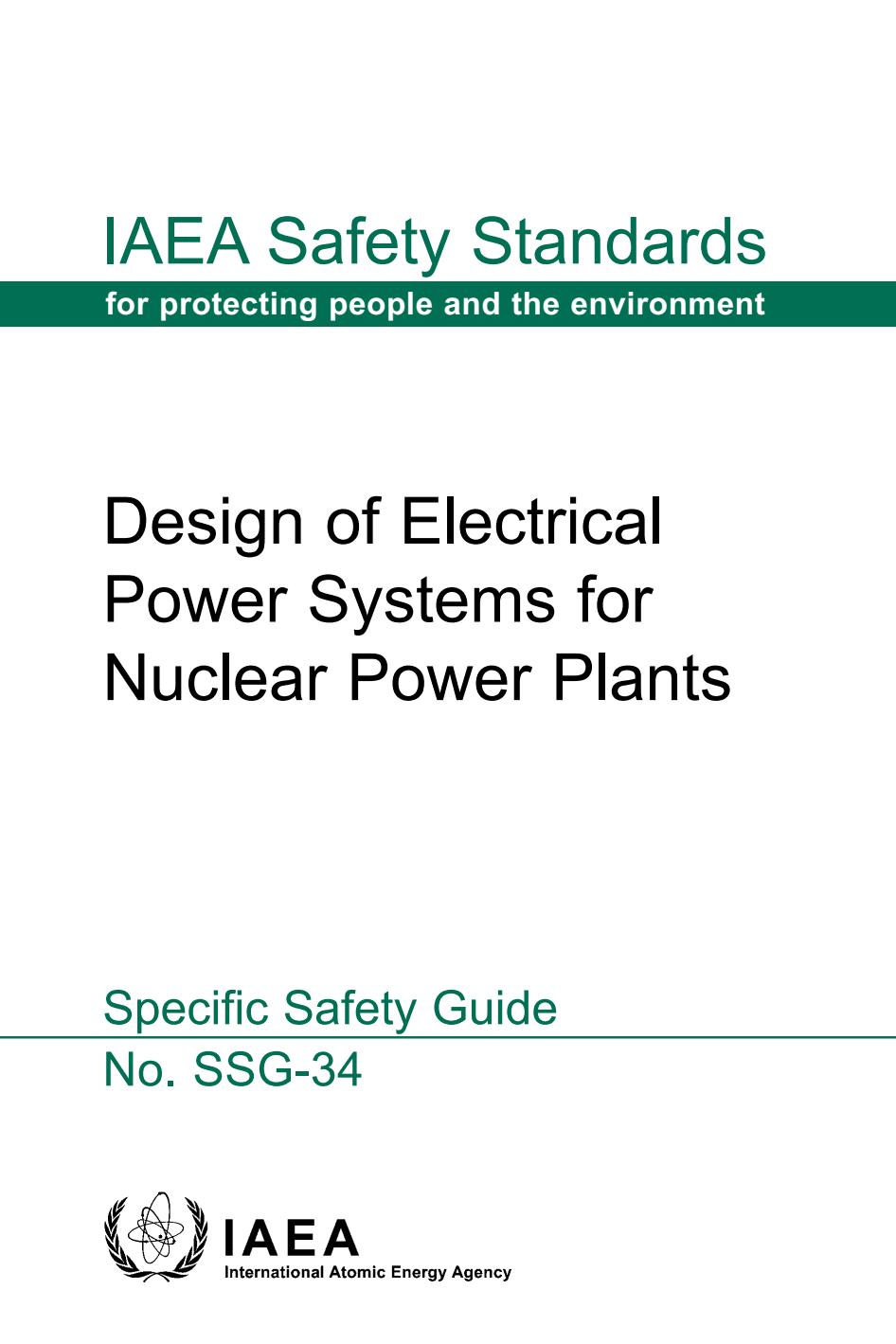Design Guidelines
The electrical power systems of the nuclear power plant should meet all functional requirements under the steady state conditions, short term operation conditions and transient conditions defined in the design basis.

Electrical and internal events can cause symmetrical and asymmetrical perturbations in the plant.
These events can be initiated:
- In the transmission system, with the plant on-line, off-line or shut down, or as a consequence of the plant separating from the grid owing to anticipated faults or voltage variations and frequency variations beyond an acceptable level.
- By the tripping of the main generator, leaving the on-site power systems connected to the off-site power systems or to other on-site power systems.
- In the on-site power systems, as a result of an electrical event such as a motor starting, a phase to ground fault or switching surges.
The impact of such events on all the on-site electrical power systems
AC and DC should be evaluated, and it should be confirmed by specific analysis that the requirements for the allowable voltage and frequency are met and the protection system is adequate.
The electrical fault clearing time should be defined by the grid operator. This desired defence in depth capability supports the preferred power supply operation.

a nuclear power plant
Station blackout
International operational experience has shown that loss of the preferred power supply concurrent with a turbine trip and unavailability of all standby AC power supplies is a credible event. Such an event may affect a single unit, and even all units on one site.
Such an event is called station blackout and its frequency of occurrence should be low enough to be considered and analysed as a design extension condition event.
The term does not include the simultaneous failure of an uninterruptible AC power system or DC power sources, or the failure of alternate AC power sources that are diverse in design and not susceptible to the events that caused the loss of on-site and off-site power sources.
Several design measures are possible as a means of increasing the capability of the electrical power systems to cope with a station blackout.
These measures include, for example: increasing the capacity of batteries to supply power to safety instrumentation and control equipment, and to other vital equipment; use of unit to unit connections; or installing an alternate AC power source that is diverse in design and is protected from hazards that could degrade the normal power sources and standby power sources.
| Title: | Design of Electrical Power Systems for Nuclear Power Plants (NPP) – IAEA International Atomic Energy Agency |
| Format: | |
| Size: | 2.00 MB |
| Pages: | 144 |
| Download: | Right here | Video Courses | Membership | Download Updates |


